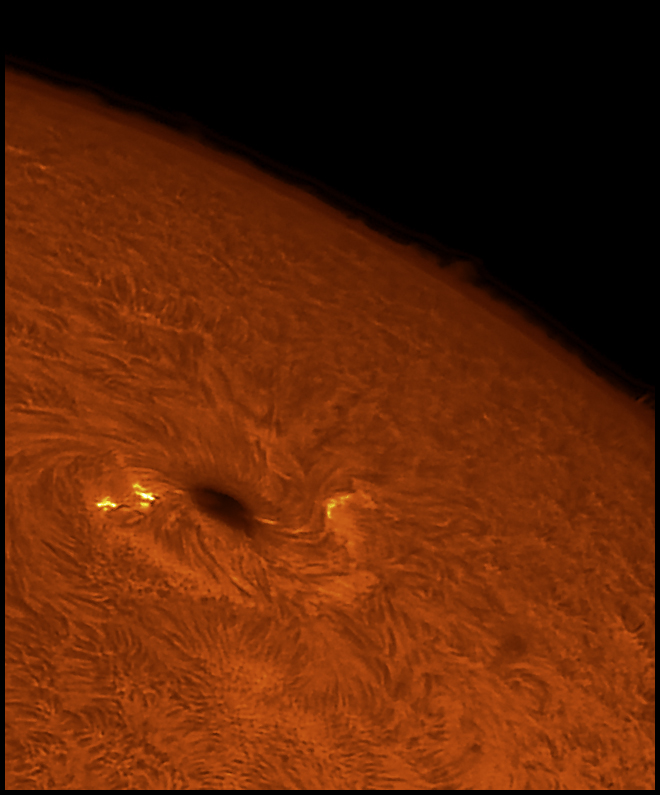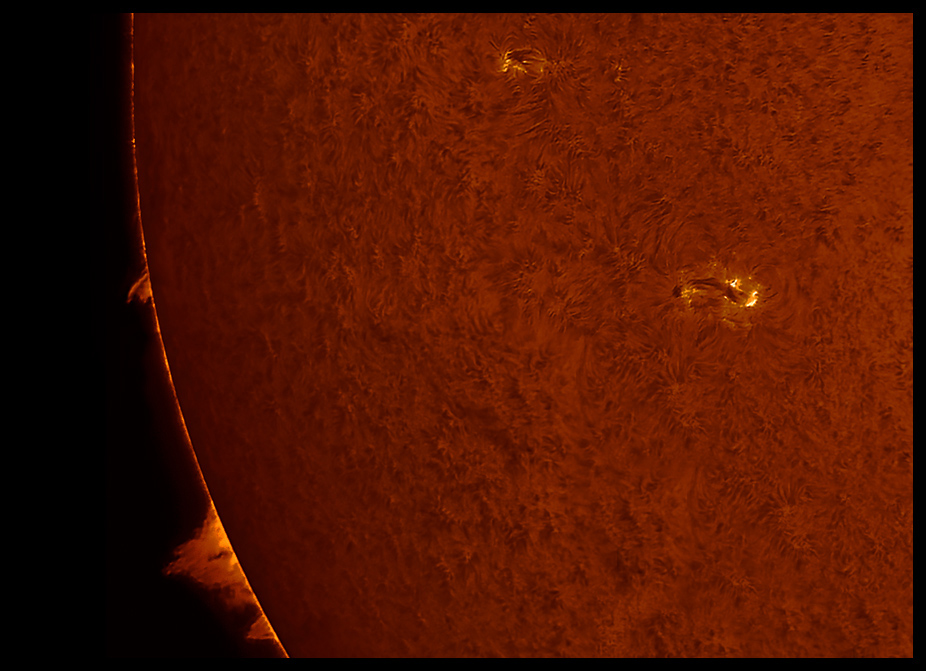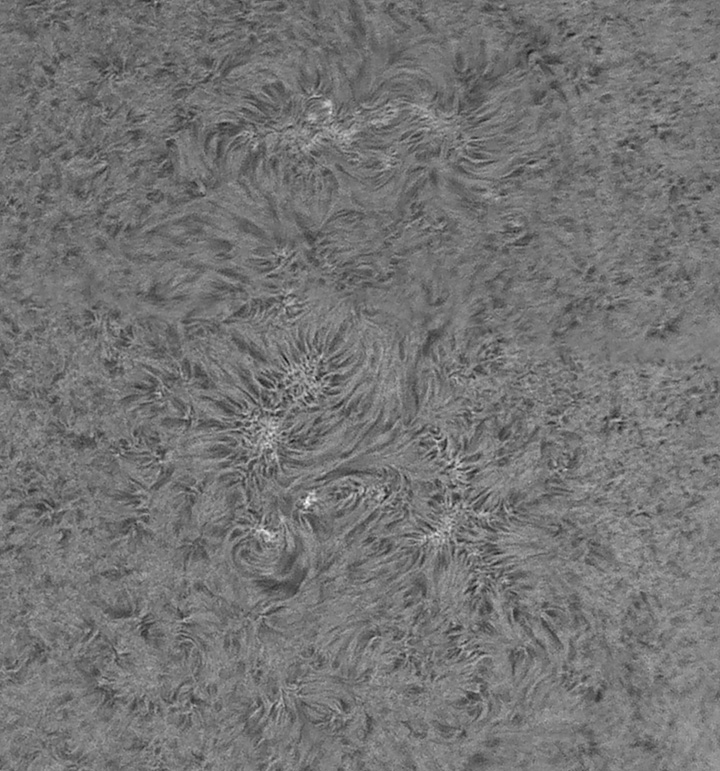Some tuning
05/27/2016. Stacking solar imagery has conflicting imperatives: in any clip of N frames, some subset S will be sharper than any arbitrary quality threshhold, but a stack of all and only the frames in S will be electronically noisier than a stack of all the members of S plus some additional frames that do not quite meet that threshhold.
Maybe it's clearer with numbers. Say you have a 1,000 frame video clip. If you stack the sharpest 20 frames, the noise in the stack will be greater than if you used the sharpest 100 frames. But if you use the sharpest 100 frames, you'll be incorporating frames that must be less sharp than the sharpest 20. What's the optimum strategy?
Beats me. But I am pretty sure I have been using too few frames when I use 50 or 75 or even 150.
So take longer clips and use the best 200 or 250, right? Yes, but only up to a point: things move on the Sun. At image scales down around 0.25 arcseconds per pixel, the time it takes to acquire a long clip allows solar details to blur and shift. My camera / computer combination gathers slightly over 25 frames per second. Is a minute too long? It takes about 80s to gather 2,000 frames. So maybe I should relax the quality threshhold and use 200 out of 1,000. This image says that's so:

Go on, click the image for a closer look.
I love the subtle glow that almost bridges the umbra.
Best 250 / 1000 frames
3.5ms, gain=37
FireCapture, AVIStack2, Registax 6, Photoshop
On the computer, the difference is stark. I can be much more aggressive in sharpening and stretching the deeper stacks. Noise does not come up nearly as quickly as when working with shorter stacks. I've tried some 2,000 frame clips, too. With them, I can be twice as selective and retain the same stack depth. The result is slightly sharper, but only slightly. Worth the extra storage and time and nuisance? Maybe. That probably depends on what the Sun and the atmosphere are doing on any particular day. Whatever factors bear on the distribution of sharpness within the stack and the rate of lapse from sharp to blurred will require adjusting the strategy. It's a good thing we each carry a neural net in our heads, because to make that adjustment algorithmically would be a tough nut.
Incidentally, that image has enough of the solar limb included that I can use it to determine accurately the image scale of the current outfit: 0.33 arc seconds / pixel which implies an efl of 2350mm and a focal-ratio of F26.
05/30/2016. More practice. I've been out every clear and semi-clear day, but I don't have too much worth showing off. I had a few decent clips and images day before yesterday, and from them I learned not to use the RAMDrive for routine processing tasks. Works great, but then comes 2 AM, and you're tired, and you turn off the computer before copying stuff to a physical disk. So it goes.
First: a nice mosaic of several (5? 6?) clips. 200 frames from each 1000-frame clip. The prominences I shot with higher gain and different gamma. Yes, I shot a seperate flat for them. I isolated them using a black on transparent occulting disk in Photoshop. And second, a two-frame mosaic showing an extensive area of confused magnetism but no spots or active region:

Click it. You know you want to.

Something's happening here.
What it is ain't exactly clear.
I also tried some very fast exposures at much higher gain. Like sub millisecond exposures at gain 80 or so. Don't do that. 200 frame stacks do not make up for the added noise. All in all, my 5 msec, gain = 37 routine seems to be pretty good.
Later that same day: Inspired by an article about amateur planetary imagers supporting the Juno mission to Jupiter, I decided to give AutoStakkert2 another audition. I downloaded the beta release, fumbled with it some, then --bingo! This is the ticket. It's fast and the results are (usually, significantly) better than I've been getting with AVIStack2. This calls for some serious experimentation. Even my recent greatly over-sampled, longer EFL images work well. Show and tell soon. That's why we keep the raw data files.